12 Types of Cactus (With Pictures)
-
Pete Ortiz
- Last updated:
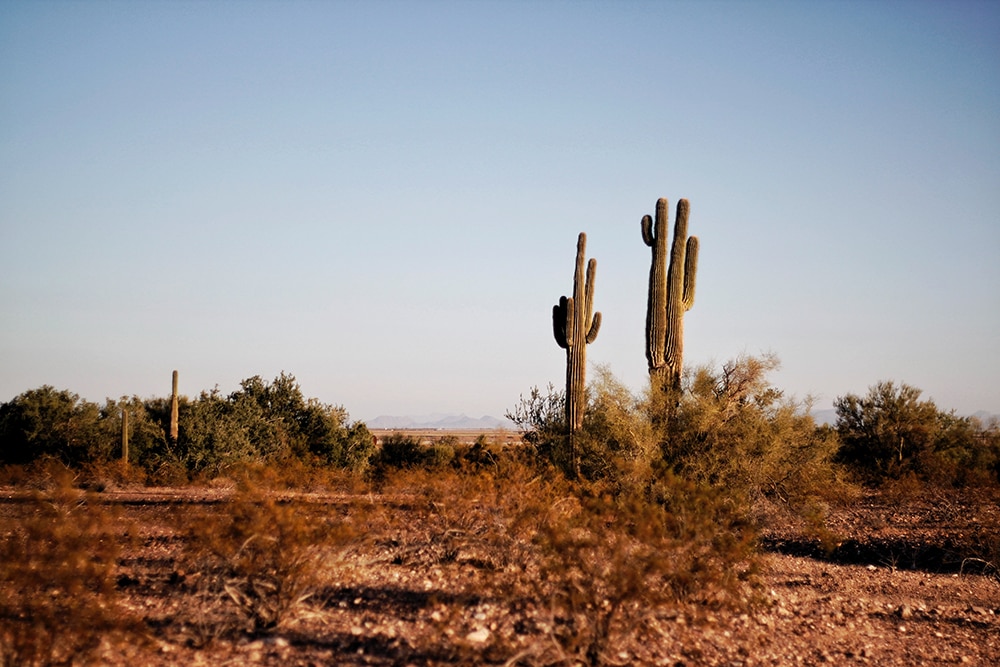
While there are thousands of succulent varieties, cacti stand in a class all their own. Belonging to the family Cactaceae, there are over 2,000 species of these drought-hardy plants. You can find their bristly forms throughout the western hemisphere, extending as far south as Argentina and as high up as Canada.
The flawless organization of their areoles, startlingly beautiful flowers, and minimal maintenance demands make cacti some of the most desirable plants to grow inside the home and outdoors. Discover the breadth of their forms and habits as we look at 12 types of cacti.
The 12 Most Common Types of Cactus
1. Saguaro
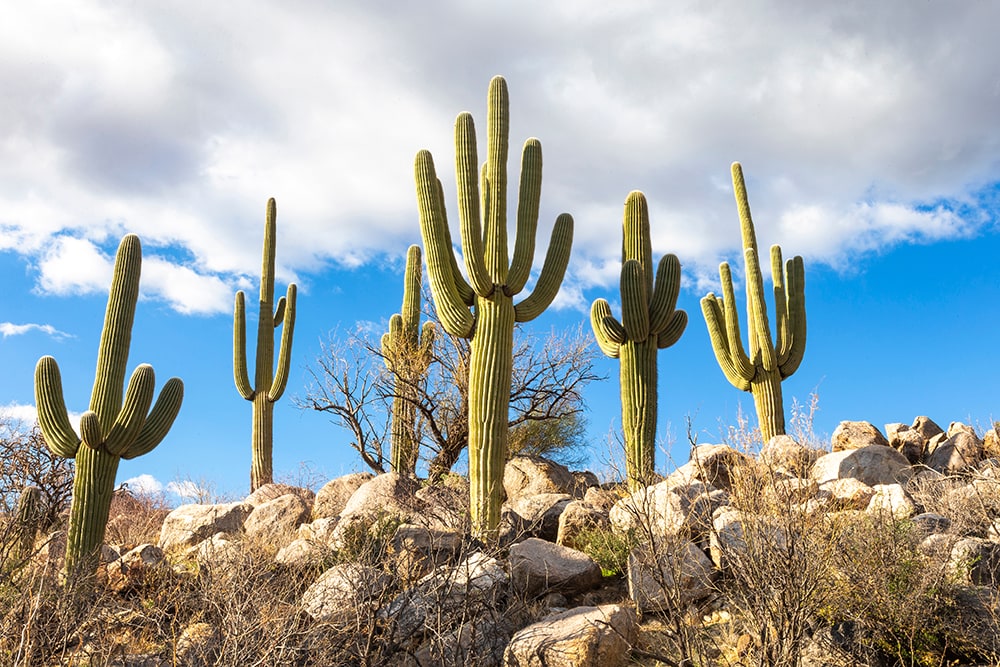
| Scientific Name: | Carnegiea gigantea |
| Height: | 40 feet |
Saguaro cacti only grow to about 4,000 feet above sea level. They grow exclusively in the Sonoran Desert in southern Arizona, where their white blossoms are the state flower.
2. Fairy Castle Cactus
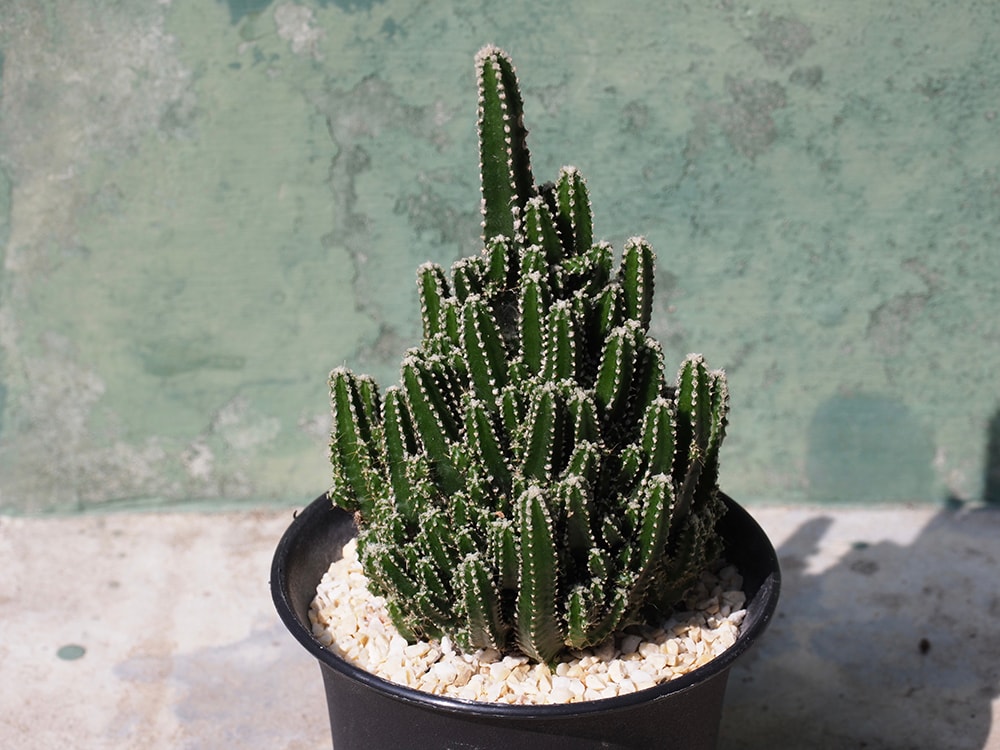
| Scientific Name: | Acanthocereus tetragonus |
| Height: | 6 feet |
Although flowering is rare, gorgeous white and yellow blossoms will emerge under ideal conditions. But even without flowering, the clean lines of bright areoles contrast with the deep green of the stem. The cactus create a stunning display throughout the year.
3. Powder Puff Cactus
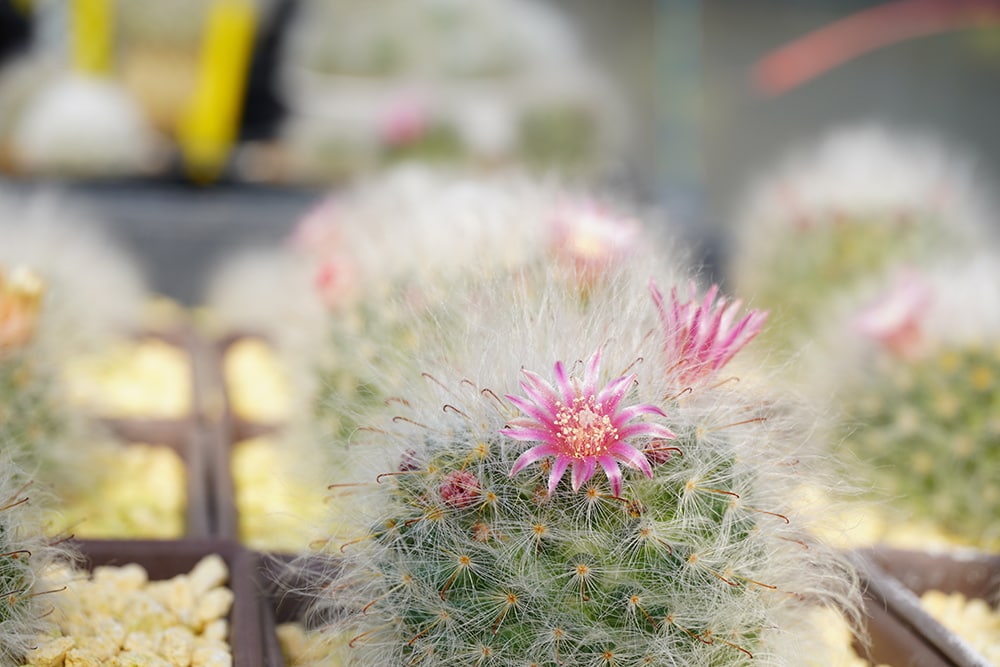
| Scientific Name: | Mammillaria bocasana |
| Height: | 5 inches |
The lilliputian cactus is stark white when mature, but it’s surprisingly full of color underneath its snowy exterior. Curving spines are red or yellow, which makes a delightful complement to the bluish-green skin. Though hidden, they’ll make themselves known if you fall for the prickly cactus’s deceptively soft appearance and try to handle it.
4. Brittle Prickly Pear

| Scientific Name: | Opuntia fragilis |
| Height: | 8 inches |
The brittle prickly pear, a low-growing, clumping variety, is notable because it grows as far north as British Columbia, a rare feat for any cactus species. Despite only growing about 1.5–2 inches thick, it develops sharp spines up to an inch long. If you can overlook the thorny appearance, the cactus will delight with large yellow blooms in the summer and edible red fruit soon after.
5. Golden Barrel Cactus
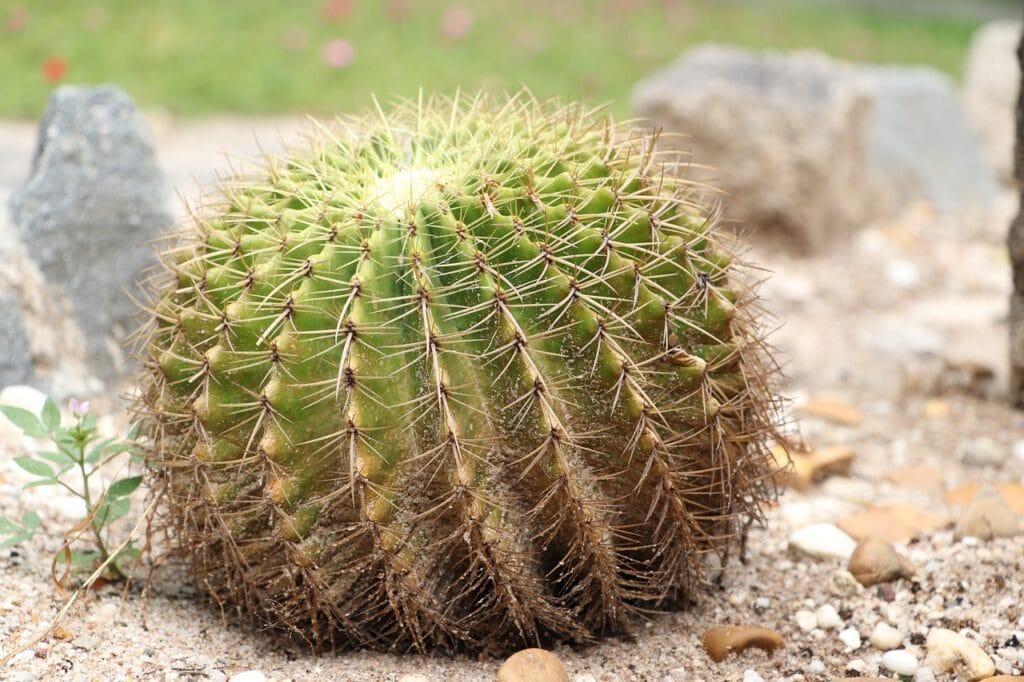
| Scientific Name: | Echinocactus grusonii |
| Height: | 3 feet |
The golden barrel cactus grows slowly as a beautiful plant for indoor and outdoor display. It only adds about an inch per year. Flowering doesn’t typically begin until the plants are at least 14 inches wide, so you may want to skip the propagating and buy a mature specimen.
6. Argentine Giant
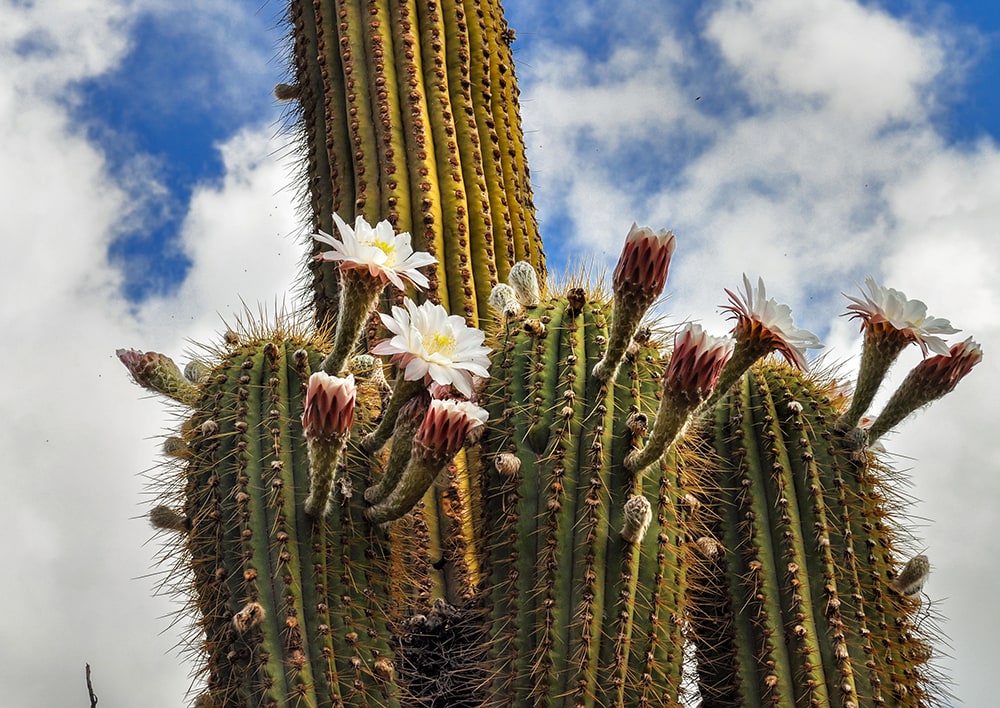
| Scientific Name: | Echinopsis candicans |
| Height: | 3 feet |
The Argentine Giant is a gorgeous species you’re unlikely to forget. Nighttime blossoms in summer are impressive, and the gigantic white flowers, which last only 24 hours, grow up to 8 inches wide and emit a wonderful fragrance.
7. Mistletoe Cactus
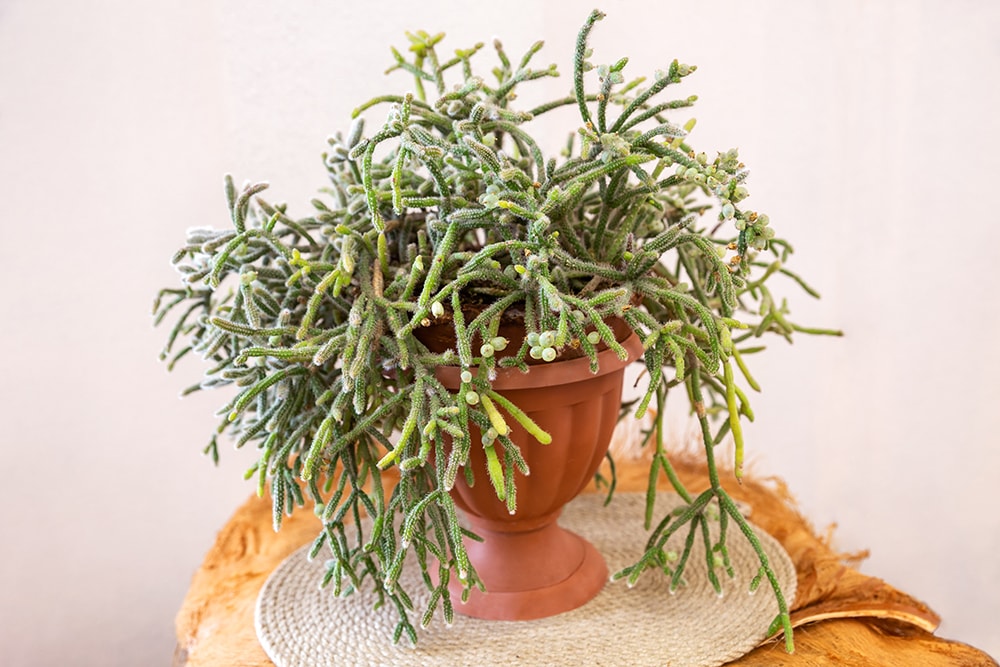
| Scientific Name: | Rhipsalis baccifera |
| Height: | 6 feet |
Because it’s only hardy in USDA zones 9–10, the mistletoe cactus typically works best as a houseplant. While the vining succulent is attractive enough, it becomes even more beautiful when it grows tiny white flowers in spring. After the flowers die back, it grows opaque, orb-shaped fruit resembling those of actual mistletoe.
8. Costa Rican Pitahaya
| Scientific Name: | Selenicereus costaricensis |
| Height: | Up to 25 feet long |
The Costa Rican Pitahaya is native to Central America and grows in bunches of slender stems. They’re ground-dwellers, but cultivators often train them to stand upright. The serrated stems and red, spiky fruit are fascinating to view, but the enormous white nighttime blooms that reach up to 15 inches wide are the true highlight of these magnificent plants.
9. Ming Thing
| Scientific Name: | Cereus forbesii monstrose |
| Height: | 1 foot |
With such a strange look, the areoles don’t show up in their standard uniformity along the stem. They stick around the apex of each section. While the plant takes an unexpected shape, it delivers the reliably showy flowers you want from a cactus, this time with magnificent purple hues alongside the white petals.
10. Mexican Lime Cactus
| Scientific Name: | Ferocactus pilosus |
| Height: | 8 feet |
The Mexican lime cactus grows summertime flowers on its crown in brilliant combinations of reds and yellows. Flowering is rare in cultivation, but the cacti’s gorgeous spines provide a splendid aesthetic, nevertheless. Areoles lining the many ridges around the barrel grow long, crimson red spikes, creating a dazzling complexity of color with the dark green cactus skin.
11. Blue Flame Cactus
| Scientific Name: | Myrtillocactus geometrizans |
| Height: | 15 feet |
Greenish white flowers arrive in spring, but they are relatively small. The fruits that follow, a collection of dark red berries, are incredibly sweet and make the plant popular for cultivation.
If you want a unique look in your home, another type of blue flame cactus, the “Elite Crest”, is also worth your consideration. Instead of growing into a column, this variety grows into a ruffled coral-like shape, which looks much different from your typical cactus.
12. Blossfeldia Liliputana
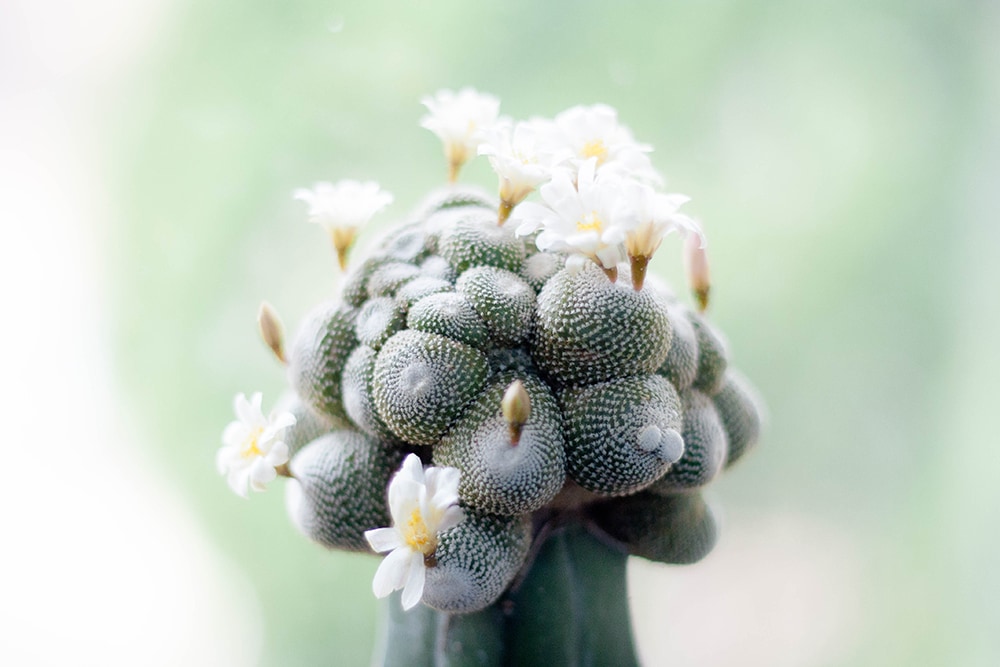
| Scientific Name: | Blossfeldia liliputana |
| Height: | <0.5 inches |
Orderly rows of white areoles swirl around the smooth green skin to create an immaculate spiraled look. White and pink flowers emerge in late spring and often grow slightly wider than the cactus body.
Final Thoughts
Cacti are some of the most striking plants you can bring to your home, whether you plant them among your outdoor landscaping or in your indoor pots. The impeccable symmetry and organization are stunning to behold, and the incredible shapes they take can seem downright impossible at times.
Capping off their magnificence is the flowering, which is the most spectacular you can find among succulents and even among most plants in general. Cacti make glorious specimens, and as arguably the most low-maintenance plants you can grow, there’s no reason to leave them out of the scenery.
- See also: What Is the State Flower of Hawaii?
Featured Image Credit: Yigithan Bal, Pexels
Contents


